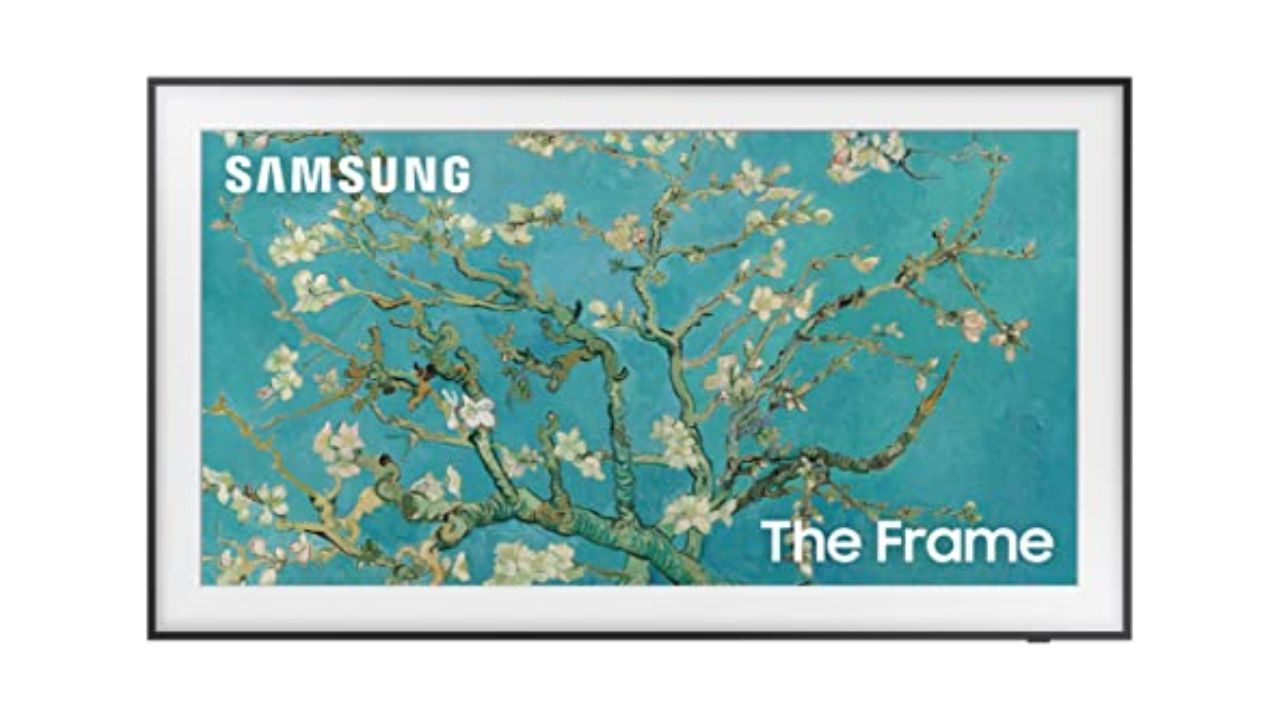Introduction
Welcome to the world of digital photography! In this digital age, capturing and preserving special moments has become easier and more accessible than ever before. Digital photography has revolutionized the way we take, share, and store photographs. Whether you’re a professional photographer, a hobbyist, or just someone who loves snapping pictures with your smartphone, understanding the basics of digital photography is essential.
A digital photo refers to an image that is captured and stored in a digital format. Unlike traditional photos that require film and darkroom development, digital photos are created using electronic sensors and stored as electronic files. These digital files can be easily viewed, edited, and shared using various devices and platforms.
So, what exactly makes digital photos different from their traditional counterparts? The answer lies in the technology used to capture, process, and store the images. In the realm of digital photography, everything is done electronically, eliminating the need for chemical processes and physical prints.
There are numerous advantages to digital photography. First and foremost, the instant preview feature allows you to see the photo immediately after capturing it. This means you can retake the photo if it didn’t turn out the way you wanted, ensuring you capture the perfect shot every time. Additionally, digital files can be easily shared online, printed on demand, and stored indefinitely without the risk of degradation or loss.
In this article, we will delve deeper into the world of digital photography, exploring how digital photos are captured, processed, and stored. We will discuss different file formats, image resolution, types of digital cameras, as well as essential tips for taking great digital photos. We will also touch on editing and enhancing digital photos, organizing and storing them effectively, and various ways to share and print your digital masterpieces.
So, whether you’re a photography enthusiast looking to improve your skills or someone who simply wants to understand the technology behind the photos you snap on your smartphone, this guide will provide you with the knowledge and insights you need to navigate the exciting world of digital photography.
What is a Digital Photo?
A digital photo refers to an image that is captured and stored in a digital format. Instead of using film and a darkroom process like traditional photography, digital photos are created using electronic sensors and stored as electronic files.
When you take a digital photo, the camera’s image sensor captures the light that enters the lens and converts it into an electronic signal. This signal is then processed by the camera’s internal software, which applies various adjustments, such as white balance, exposure, and saturation, to create the final image.
The resulting image is stored as a digital file, typically in formats such as JPEG (Joint Photographic Experts Group), PNG (Portable Network Graphics), or RAW (uncompressed and unprocessed data captured by the camera’s sensor).
One of the key advantages of digital photography is the ability to instantly view and review your photos. Most digital cameras and smartphones have LCD screens that allow you to preview the image immediately after you capture it. This instant feedback enables you to make adjustments, retake the photo if necessary, and ensure you have captured the desired moment or subject.
Furthermore, digital photos offer the convenience of being easily transferable and shareable. Once your photo is captured and stored as a digital file, you can transfer it to various devices or platforms, such as computers, tablets, or social media platforms, making it accessible to a wider audience.
With the advancement of technology, digital photos have become an integral part of our daily lives. From smartphones to professional DSLR cameras, the ease of capturing and sharing digital photos has made it possible for everyone to document and share their experiences, memories, and creative expressions.
Whether you’re capturing breathtaking landscapes, documenting special moments with loved ones, or expressing your artistic visions, digital photos provide endless possibilities for creative expression and storytelling.
As we continue to embrace the digital age, the world of digital photography will only expand, offering new innovations, tools, and techniques to enhance our photographic experiences.
How is a Digital Photo Different from a Traditional Photo?
Digital photos and traditional photos may serve the same purpose of capturing and preserving moments, but they differ significantly in terms of the technology used, process, and storage.
First and foremost, the most obvious difference lies in the capturing process. Traditional photos are taken using film cameras, where light enters through the lens and exposes the film, creating a latent image. This film then needs to be developed in a darkroom using various chemicals to bring out the final image.
On the other hand, digital photos are captured electronically using digital cameras or even smartphones. Instead of film, digital photos use electronic sensors, such as CCD (charge-coupled device) or CMOS (complementary metal-oxide-semiconductor) sensors, to record the light that enters the lens. These sensors convert the light into digital information, creating a digital file instantly that can be viewed on the camera’s LCD screen.
The second significant difference is the process of image storage. Traditional photos are usually printed on paper and physically stored in albums or frames. They can easily deteriorate over time due to exposure to light, humidity, and other environmental factors.
On the other hand, digital photos are stored as electronic files on various storage devices such as memory cards, hard drives, or cloud storage. These digital files can be easily duplicated, backed up, and organized, without losing any image quality. However, it’s crucial to regularly back up your digital photos to ensure they are protected from accidental loss or device failure.
One of the advantages of digital photos is the ability to post-process and enhance the images easily. With various photo editing software applications available, you can adjust colors, contrast, brightness, and even remove unwanted elements from your digital photos. This flexibility allows for greater creative control and the opportunity to refine your images to match your artistic vision.
Another notable difference is the cost factor. Traditional film photography involves the cost of purchasing film rolls, developing, and printing the photos. In contrast, digital photography eliminates the need for film and developing costs. You can take an unlimited number of photos and only print the ones you want, saving both time and money.
Additionally, the accessibility and ease of sharing digital photos have transformed the way we communicate and connect with others. With just a click, you can instantly share your digital photos with friends and family across various platforms, such as social media, email, or messaging apps. This immediacy allows for instant sharing and a wider reach for your photos.
As digital technology continues to advance, the gap between digital and traditional photography becomes more pronounced. While traditional photography still holds a nostalgic appeal and has its dedicated enthusiasts, the convenience, flexibility, and accessibility of digital photography have made it the preferred choice for most photographers in today’s digital era.
Advantages of Digital Photography
Digital photography has significantly transformed the way we capture, edit, store, and share our photos. It offers a multitude of advantages over traditional film photography, making it a popular choice for photographers of all levels. Here are some of the key advantages of digital photography:
Instant Preview: One of the greatest advantages of digital photography is the ability to instantly preview your photos. After capturing an image, you can immediately view it on the camera’s LCD screen. This instant feedback allows you to assess the composition, exposure, and overall quality of the photo, making it easier to make adjustments or retake the shot if needed.
Cost-effective: Digital photography eliminates the cost of film and developing, which can quickly add up in traditional photography. Once you have a digital camera or smartphone, you can capture an unlimited number of photos without any additional cost. You have the flexibility to delete unwanted images and only print or store the ones you truly cherish.
Editing and Enhancement: With digital photos, you have the ability to edit and enhance your images easily. There are a plethora of photo editing software and apps available that allow you to adjust colors, crop, apply filters, and fix imperfections. This flexibility gives you greater control over the final look of your photos and the opportunity to unleash your creative vision.
Instant Sharing: Digital photos can be easily shared with others in an instant. Whether through social media platforms, email, or instant messaging, you can effortlessly share your photos with friends, family, and even a global audience. This accessibility allows for immediate feedback, engagement, and the creation of online albums or portfolios to showcase your work.
Storage and Preservation: Digital photos can be easily stored and preserved without degradation or loss of quality. They can be stored on various devices such as hard drives, memory cards, or cloud storage. This ensures that your precious memories are safe and accessible for years to come. However, it’s important to regularly back up your digital photos to prevent any potential loss.
Flexibility and Experimentation: Digital photography provides tremendous flexibility and room for experimentation. You can adjust settings, such as ISO, aperture, and shutter speed, on the fly, allowing for real-time exploration and creative expression. You can also experiment with different shooting techniques, angles, and lighting conditions, pushing the boundaries of your photography skills.
Convenience and Accessibility: Digital cameras and smartphones have made photography more accessible and convenient than ever before. You can carry your camera or smartphone with you at all times, ready to capture any moment that inspires you. This accessibility enables spontaneous photography and the opportunity to document life’s precious moments on the go.
These advantages of digital photography have democratized the art and craft of photography. With the advancements in technology, more and more people are able to explore their creativity, tell their stories, and capture the beauty of the world around them with ease and convenience.
Details on How Digital Photos are Captured and Processed
Understanding the process of capturing and processing digital photos can provide valuable insights into how our favorite images are created. Let’s dive into the technical details:
Capturing the Photo: When you press the shutter button on a digital camera or smartphone, the lens captures the incoming light. This light enters the camera and reaches the electronic sensor, which is usually either a CCD (charge-coupled device) or CMOS (complementary metal-oxide-semiconductor) sensor. The sensor converts the light into electrical signals, creating a digital representation of the scene.
Processing the Image: Once the digital file is created, it goes through a process of image processing within the camera or smartphone. This processing includes various adjustments and enhancements to optimize the image’s quality. The camera’s built-in software analyzes the information captured by the sensor and applies corrections such as white balance adjustment, exposure compensation, noise reduction, and color rendition. This processing helps to refine the captured image and produce a final, more visually appealing result.
RAW Files: In addition to JPEG and other compressed formats, many digital cameras also offer the option to capture photographs in a RAW format. RAW files contain the unprocessed and uncompressed data directly captured by the camera’s sensor. They provide photographers with greater flexibility during post-processing, as they retain all the original details and allow for more extensive adjustments to be made.
White Balance: White balance adjustment is a crucial step in the image processing pipeline. It ensures that the colors in the photo appear accurate and natural. By analyzing the color temperature of the light source, the camera’s software adjusts the color balance of the image to match the perceived lighting conditions. This is particularly important when shooting in different lighting environments, such as natural daylight or artificial indoor lighting.
Exposure: Exposure refers to the amount of light that reaches the camera’s sensor. It determines the brightness and contrast of the image. Through the process of exposure compensation, the camera’s software analyzes the light intensity and adjusts the exposure levels to ensure the image is properly exposed. This adjustment helps to avoid overexposed (too bright) or underexposed (too dark) areas in the final photo.
Color Rendition: The camera’s software also plays a crucial role in rendering accurate and vibrant colors in digital photos. By applying various algorithms, known as color profiles, the camera adjusts the saturation, tone, and hue of the captured image. This process helps to reproduce the colors as faithfully as possible, ensuring the final photo appears true to life or matches the artistic intent of the photographer.
Understanding the process of capturing and processing digital photos provides valuable insights into the technological aspects that contribute to the final image. While the camera’s software plays a significant role in optimizing and enhancing the photos, it’s important to note that photographers have the option to further refine and personalize their images during post-processing using dedicated photo editing software.
Common File Formats for Digital Photos
When it comes to digital photography, understanding the different file formats is essential for capturing, storing, and sharing your photos effectively. Here are some of the most common file formats used for digital photos:
JPEG (Joint Photographic Experts Group): JPEG is perhaps the most widely used file format for digital photos. It uses lossy compression, which means that some data is discarded during compression to reduce file size. This compression results in a smaller file size, making it easier to store and share photos. JPEG files are compatible with most devices, software, and online platforms, preserving a good balance between image quality and file size. However, it’s worth noting that each JPEG compression process introduces some loss of quality, so it’s important to strike the right balance when saving images in this format.
RAW (Uncompressed and Unprocessed): RAW files contain the unprocessed and uncompressed data captured by the camera’s sensor. Unlike JPEG, RAW files preserve all the original details, allowing for greater flexibility during post-processing. RAW files provide photographers with more control over parameters such as white balance, exposure, and color rendition. However, RAW files are larger in size and require special software or plugins to view and edit. They are mainly used by professionals or advanced photographers who require extensive post-processing capabilities.
PNG (Portable Network Graphics): PNG is a lossless file format that supports high-quality images with transparent backgrounds. It is commonly used for graphics and web images, but can also be used for digital photos. Unlike JPEG, PNG files do not undergo compression that affects image quality, resulting in larger file sizes. PNG files are well-suited for images that require transparency or when preserving image details without compression is paramount.
TIFF (Tagged Image File Format): TIFF is another popular file format for digital photos, especially in professional settings. It supports lossless compression, thereby preserving image quality. TIFF files are larger in size compared to JPEG or PNG, making them ideal for archiving or printing purposes. TIFF files retain all the original image data and can be edited or modified without any loss of quality. However, due to their large file size, they may be difficult to handle or share on certain platforms or devices.
HEIF (High Efficiency Image Format): HEIF is a relatively newer file format designed to provide high-quality images with efficient compression. It offers superior image quality compared to JPEG, at a smaller file size. HEIF files support features such as multiple images (burst mode), image sequences, and even animations. While HEIF is gaining popularity, it may not be universally supported by all devices and software yet.
Understanding the different file formats for digital photos allows you to choose the most appropriate format based on your specific requirements. Whether you prioritize file size, image quality, or post-processing capabilities, selecting the right file format ensures that your digital photos are stored, shared, and displayed optimally.
Understanding Image Resolution in Digital Photography
Image resolution plays a crucial role in digital photography, impacting the clarity, sharpness, and level of detail in your photos. It refers to the number of pixels contained within an image, typically measured in terms of width and height. Understanding image resolution is essential for determining the quality and intended use of your digital photos. Here’s a closer look at image resolution:
Pixel: A pixel, short for “picture element,” is the smallest unit of information in a digital image. It represents a tiny square or dot on a display screen or sensor. Each pixel carries color and brightness information, collectively forming the image. The more pixels an image has, the higher the level of detail and clarity.
Resolution: Image resolution is determined by the number of pixels in the width and height of an image. For example, an image with a resolution of 1920×1080 has 1920 pixels in width and 1080 pixels in height. The total number of pixels in the image is calculated by multiplying the width and height numbers. As a result, a higher resolution image contains more pixels and is capable of displaying finer details.
Pixel Density: Pixel density, also known as pixel per inch (PPI) or dots per inch (DPI), refers to the number of pixels in a given area. It indicates how detailed an image will appear when printed or displayed on a screen. Higher pixel density results in sharper and clearer images, while lower pixel density may exhibit pixelation or loss of detail.
Print Size: Image resolution is particularly important when it comes to printing your digital photos. The resolution determines the level of detail and sharpness in the printed image. The higher the resolution, the more pixels are available to reproduce fine details. The print size you choose will directly impact the resolution required for a high-quality print. Larger print sizes typically require higher resolution images to maintain optimal quality.
Screen Display: When it comes to displaying images on electronic screens, such as computer monitors, tablets, or smartphones, the resolution of the display itself also plays a role. It determines how sharp and detailed the image appears on the screen. Higher resolution displays can showcase images with greater clarity and detail, while lower resolution screens may not fully capture the intricacies of a high-resolution image.
Scaling and Interpolation: Scaling an image involves resizing it to fit a particular size or aspect ratio. This process can be done using software or during printing. During scaling, interpolation algorithms fill in the gaps between pixels to maintain image quality. However, scaling an image up too much or beyond its original resolution may result in pixelation or loss of detail.
Understanding image resolution allows you to determine the quality and the intended use of your digital photos. Whether you’re printing your images, displaying them on screens, or sharing them online, selecting the appropriate resolution ensures that your photos are showcased with the desired level of detail and clarity.
Types of Digital Cameras
The world of digital photography offers a wide range of cameras to suit different preferences, shooting styles, and skill levels. Here are some of the common types of digital cameras available:
1. DSLR (Digital Single-Lens Reflex): DSLR cameras are known for their versatility and image quality. They feature a reflex mirror that allows you to view the scene through an optical viewfinder. DSLRs offer interchangeable lenses, manual controls for advanced settings, and the ability to capture images in RAW format. They are popular among professional photographers, enthusiasts, and those who desire complete control over their photography.
2. Mirrorless Cameras: Mirrorless cameras are becoming increasingly popular due to their compact size and advanced features. Unlike DSLRs, they don’t have a reflex mirror but use an electronic viewfinder or LCD screen for framing. Mirrorless cameras offer interchangeable lenses, high-speed continuous shooting, and advanced autofocus systems. They are a great choice for photographers looking for portability and excellent image quality in a smaller package.
3. Point-and-Shoot Cameras: Point-and-shoot cameras, also known as compact cameras, are designed for convenience and ease of use. They are compact, lightweight, and typically fit in your pocket. Point-and-shoot cameras have fixed lenses and automatic settings, making them ideal for casual photographers or those who prefer a simple, hassle-free shooting experience. While they may not offer the same level of control as DSLRs or mirrorless cameras, they can still deliver impressive image quality.
4. Bridge Cameras: Bridge cameras bridge the gap between point-and-shoot cameras and DSLRs. They offer more advanced features, including manual controls and a wide zoom range. Bridge cameras have a fixed lens that cannot be changed but provides a versatile focal length suitable for various shooting situations. They are a popular choice for photographers looking for a step-up from compact cameras but don’t want to invest in an interchangeable lens system.
5. Action Cameras: Action cameras are built for capturing immersive and adventurous moments. They are compact, rugged, and designed to withstand extreme conditions. Action cameras offer wide-angle lenses, waterproof and shockproof bodies, and advanced stabilization technology. They are popular for capturing action sports, outdoor activities, and unique perspectives not easily achieved with other camera types.
6. Smartphone Cameras: In today’s digital world, smartphones have become a prevalent tool for photography. With advancements in smartphone camera technology, they can capture high-resolution images with impressive quality. Smartphone cameras offer convenience, portability, and seamless integration with various editing and sharing apps. They are ideal for casual photographers who want to capture and share images on the go.
Each type of digital camera offers its own set of features and advantages. The choice ultimately depends on your photographic needs, desired level of control, portability requirements, and budget. It’s important to consider factors such as image quality, lens options, shooting modes, and connectivity when selecting the camera that best suits your preferences and goals.
Essential Tips for Taking Great Digital Photos
Taking great digital photos is a combination of technical knowledge, artistic vision, and practical skills. Whether you’re a beginner or an experienced photographer, here are some essential tips to help you capture stunning images:
1. Understand Your Camera: Take the time to familiarize yourself with your camera’s features, settings, and controls. Read the user manual, experiment with different shooting modes, and practice using manual controls for greater creative control.
2. Compose Thoughtfully: Composition is key to creating visually appealing photos. Learn and apply the rule of thirds, leading lines, and other composition techniques to create balanced and engaging images. Experiment with different angles and perspectives for unique and compelling compositions.
3. Pay Attention to Lighting: Lighting is crucial in photography. Optimal lighting can enhance the mood and emphasize details in your photos. Learn to work with natural light, experiment with different times of the day, and consider using reflectors or external flash for more control over lighting conditions.
4. Focus on the Subject: Ensure your subject is sharp and in focus. Understand the autofocus system of your camera and use focus points effectively. Take the time to compose the shot properly and focus on the subject’s eyes or the point of interest for maximum impact.
5. Experiment with Depth of Field: Adjusting the depth of field can create different effects in your photos. Use a wide aperture (low f-number) for a shallow depth of field to isolate your subject from the background. Alternatively, use a narrow aperture (high f-number) for a greater depth of field, keeping more elements in focus.
6. Pay Attention to Backgrounds: A cluttered or distracting background can take away from the impact of your subject. Be mindful of the elements in the background and adjust your position or use a wide aperture to blur out unwanted distractions and keep the focus on your subject.
7. Capture Emotion and Action: Timing is essential when capturing emotions and action. Anticipate the moment, be patient, and be ready to capture genuine expressions and decisive moments. Experiment with different shutter speeds to freeze action or create motion blur for dynamic effects.
8. Use the Rule of Simplicity: Embrace simplicity in your compositions. Avoid clutter and unnecessary elements that may distract from the main subject. A clean and uncluttered composition allows the viewer to focus on the subject and makes for a more impactful image.
9. Pay Attention to Details: Visualize the entire frame and pay attention to details. Check for distractions, ensure horizons are straight, and look out for any unwanted elements that may detract from the overall image. Take the time to fine-tune your composition and make any necessary adjustments before capturing the shot.
10. Practice and Experiment: Photography is an ongoing learning process. Practice regularly and challenge yourself to try new techniques or genres. Experiment with different settings, lighting conditions, and subjects to expand your creative horizons and develop your unique style.
Remember, these tips are meant to serve as guidelines, but rules are made to be broken. Embrace your creativity, trust your instincts, and have fun with your photography. With passion, patience, and persistence, you will continue to grow and develop as a photographer.
Editing and Enhancing Digital Photos
Editing and enhancing digital photos is an essential step in the digital photography workflow. It allows you to refine your images, correct imperfections, and bring your creative vision to life. Here are some key considerations and techniques for editing and enhancing your digital photos:
1. Choose the Right Software: There are various software applications available for editing digital photos, ranging from basic to advanced. Popular options include Adobe Photoshop, Lightroom, GIMP, and Capture One. Choose a software that suits your skill level, budget, and desired editing capabilities.
2. Adjust Exposure and Contrast: Fine-tuning exposure and contrast can dramatically improve the overall look of your photos. Use tools like brightness, contrast, and curves adjustment to control the tonal range and enhance the image’s dynamic range.
3. Enhance Colors: Adjusting colors can significantly impact the mood and visual impact of your photos. Utilize tools such as saturation, vibrance, white balance, and color balance adjustments to enhance or correct the colors in your image. Experiment with selective color adjustments to add emphasis to specific hues.
4. Crop and Straighten: Composition plays a vital role in the impact of your photos. Use cropping and straightening tools to remove unwanted elements, improve the framing, and create a more balanced composition. Consider the rule of thirds and other composition techniques to guide your cropping decisions.
5. Remove Imperfections: Imperfections such as dust spots, blemishes, or distractions can be easily removed during the editing process. Utilize spot healing, clone stamp, or content-aware fill tools to eliminate these distractions and achieve a cleaner, more polished look.
6. Sharpen and Reduce Noise: Sharpening your photos can enhance details and make the image appear crisper. Be cautious not to over-sharpen, as it can introduce artifacts. Additionally, reducing noise improves the overall smoothness of the image, particularly in areas with low light or high ISO settings.
7. Use Filters and Presets: Filters and presets can help you achieve a desired look or style with just a few clicks. Experiment with pre-made filters or create your own presets to apply consistent adjustments across multiple photos or to achieve a specific artistic effect.
8. Apply Creative Effects: Get creative and experiment with various artistic effects to add a unique touch to your photos. This can include vignetting, selective blurring, black-and-white conversions, or adding textures. Strive for a balance between enhancing the image and preserving its natural appearance.
9. Non-Destructive Editing: Whenever possible, work in a non-destructive editing workflow. This involves using adjustment layers or virtual copies to retain the original image while applying edits. Non-destructive editing allows you to make changes and revert back to the original if needed, preserving the image’s integrity.
10. Know When to Stop: While editing is an important step, it’s crucial to know when to stop. Overediting can lead to unrealistic or unnatural-looking images. Regularly take breaks and step away from your work to gain fresh perspective. Remember, editing should enhance and complement the photo, not overpower it.
Editing and enhancing digital photos provide endless possibilities for creativity and personal expression. It allows you to transform your images from good to exceptional, bringing out the best in your photographs and showcasing your unique style as a photographer.
Storing and Organizing Digital Photos
As digital photography allows us to capture hundreds, if not thousands, of photos, it becomes essential to establish an effective system for storing and organizing your digital image files. Here are some key considerations for storing and organizing your digital photos:
1. Establish a Folder Structure: Create a logical and organized folder structure to store your digital photos. Start with a main folder and create subfolders for different categories, such as date, event, location, or subject. This structure will make it easier to locate specific photos later on.
2. Use Descriptive File Names: Rename your photo files with descriptive names that reflect the content or context of the image. This will make it easier to identify and search for specific photos in your collection. Avoid generic names like “IMG_001” that provide little information.
3. Utilize Metadata: Take advantage of metadata, such as EXIF (Exchangeable Image File Format) data, to store additional information about your photos. This may include details like the date, time, camera settings, and even keywords. Organizing and searching for photos based on metadata can streamline the process.
4. Backup Your Photos: Protect your digital photo collection by regularly creating backups. Use external hard drives, cloud storage, or both, to ensure redundancy and safeguard against data loss due to hardware failure, accidents, or theft. Consider creating off-site backups for added security.
5. Utilize Photo Management Software: Photo management software, such as Adobe Lightroom, Google Photos, or Apple Photos, can help streamline your photo organizing process. These tools allow you to import, tag, categorize, and search for your photos more efficiently.
6. Assign Tags and Keywords: Assign relevant tags and keywords to your photos to make searching and categorizing easier. Tags can be based on attributes like location, people, events, or specific themes. Invest time in tagging your photos during or after the import process to stay organized.
7. Regularly Weed Out Unwanted Photos: Periodically review and delete unwanted or duplicate photos. This helps to declutter your photo collection, making it easier to navigate and locate the best shots. Be critical and keep only the photos that are meaningful or have the highest quality.
8. Create Albums or Collections: Organize your photos into albums or collections based on different themes, projects, or events. This can help you showcase your best work, create visual stories, or compile portfolios for specific purposes.
9. Consider Metadata Preserving Formats: When saving your edited photos, consider using metadata-preserving file formats like TIFF or DNG. These formats retain the original metadata, ensuring that your photos remain organized and searchable, even after editing.
10. Regularly Review and Audit: Set aside time to regularly review your photo organization system. This includes validating file locations, updating tags or keywords, and making sure backups are up to date. By periodically auditing your photo collection, you can maintain an organized system and avoid any potential data loss or disarray.
Storing and organizing your digital photos ensures that your precious memories and creative work are easily accessible, well-managed, and preserved for the future. By implementing these strategies, you can enjoy a streamlined and efficient photo organization system that helps you find your favorite photos with ease.
Sharing and Printing Digital Photos
Once you’ve captured and edited your digital photos, the next step is to share and print them to showcase your work or share memorable moments with others. Here are some key considerations for sharing and printing your digital photos:
1. Online Sharing: Utilize online platforms and social media networks to share your digital photos with a wider audience. Websites like Instagram, Flickr, and 500px offer platforms specifically dedicated to sharing and discovering photography. Social media platforms like Facebook and Twitter also provide options to share and showcase your photos to friends, family, and followers.
2. Create Online Galleries: Consider creating your own online photo gallery or portfolio website to showcase your best work. Platforms like Squarespace, Wix, or WordPress allow you to easily design and share your photos in a professional and visually appealing manner.
3. Send Photos via Email or Messaging Apps: Share your digital photos directly with friends and family by sending them via email or messaging apps. This allows for more personal and direct interactions, and you can easily control who has access to your photos.
4. Print Your Photos at Home: If you have a high-quality printer and photo paper, you can print your photos at home. Be sure to calibrate your monitor and adjust the settings on your printer to ensure accurate color representation. Consider using photo-editing software to optimize the images for print.
5. Professional Printing Services: For larger prints, fine art prints, or when you want the highest quality print results, consider using professional printing services. Many online print shops offer a wide range of print sizes, finishes, and mounting options to suit your preferences. Ensure that your images are properly prepared and in the correct specifications recommended by the printing service.
6. Photo Books and Albums: Compile your digital photos into photo books or albums to create a physical keepsake. Many online services provide easy-to-use templates and tools for designing and printing photo books. This is a great way to tell a story or document a special event with a tangible and personalized touch.
7. Collaborate and Share with Cloud Storage: Utilize cloud storage services like Google Drive, Dropbox, or iCloud to share your photos with others. These services allow you to create shared folders or albums, making it easy to collaborate on projects or share specific sets of photos with specific individuals or groups.
8. Protect Your Photos Online: When sharing photos online, be mindful of privacy and copyright concerns. Consider adding watermarks, controlling privacy settings, or reducing the resolution and file size to deter unauthorized use or copying of your photos.
9. Print with Different Materials: Explore printing on various materials for unique and creative display options. Canvas prints, metal prints, and acrylic prints offer different textures and finishes that can enhance the visual impact of your photos. Experiment with different mediums to showcase your images in a way that suits your artistic vision.
10. Share and Print Responsibly: When sharing and printing digital photos, remember to respect the intellectual property of others. Always obtain permission before sharing or printing others’ work, and ensure that you are adhering to copyright laws and licenses.
Sharing and printing your digital photos enables you to display your work, share meaningful moments, and connect with others through the power of photography. Consider the various options available and choose the methods that best suit your intentions and audience.
Conclusion
Digital photography has revolutionized the way we capture, share, and store photos. With advancements in technology, the possibilities for creative expression and storytelling have expanded exponentially. Understanding the fundamentals of digital photography, from the capturing process to editing and sharing, empowers photographers to fully utilize the capabilities of their cameras while bringing their artistic vision to life.
From the convenience of point-and-shoot cameras to the versatility of DSLRs and mirrorless cameras, photographers can choose the type of camera that best suits their needs and preferences. Understanding image resolution, file formats, and image processing techniques are vital in achieving the best possible results for your digital photos.
Editing and enhancing digital photos provides endless possibilities for creativity, allowing photographers to refine their images and add a personal touch. Whether adjusting exposure and contrast, enhancing colors, or repairing imperfections, editing software offers tools and techniques to help photographers achieve their desired results.
Effectively organizing and storing digital photos are essential for maintaining a well-structured collection. By establishing a logical folder structure, using descriptive file names, and utilizing metadata, photographers can easily locate and manage their digital image files. Regularly reviewing and auditing the organization system ensures that everything remains up to date and easily accessible.
Sharing and printing digital photos allow photographers to showcase their work and share their creative vision with others. Whether through online platforms, social media, professional printing services, or physical prints, photographers can connect with their audience and preserve their photos in tangible and lasting forms.
As technology continues to evolve, digital photography will only become more accessible, versatile, and innovative. By staying informed about the latest developments and techniques, photographers can continue to push their creative boundaries and capture memorable moments with exceptional quality.
So grab your camera, delve into the fascinating world of digital photography, and explore the endless possibilities that await you as a photographer. Let your imagination soar, capture the beauty of the world around you, and share your unique perspective with others.

























